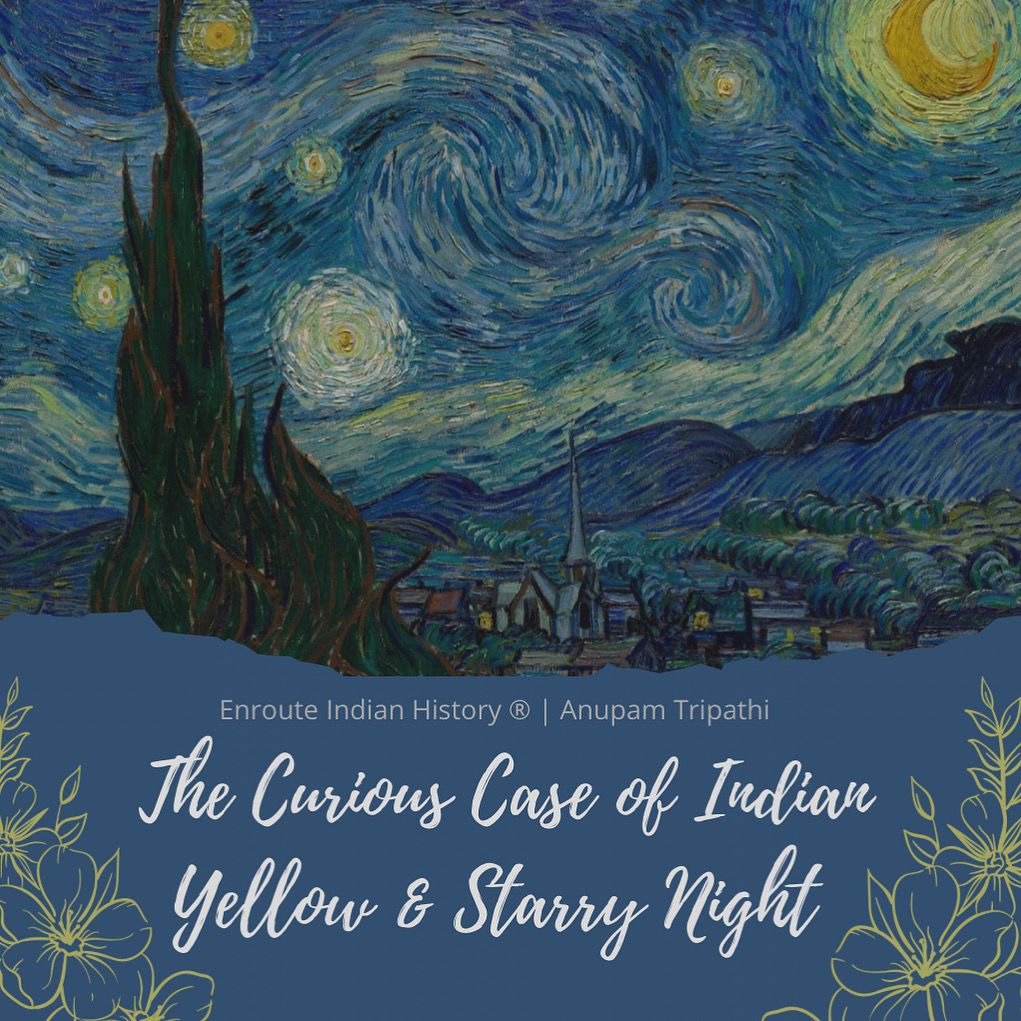The Curious Case of Indian Yellow & Starry Night
- Anoushka Jain
- March 14, 2022
- 0 Comment

Article by EIH Researcher and Writer
Anupam Tripathi
If there is one thing that cultures and regions of the world have in common, it is our love of colour, be it in our clothes, our food or hair. Colour symbolism plays an important role in all aspects of daily life, especially in celebrations and festivals. We even have given our cities colourful nicknames; the blue city of Jodhpur or the pink city of Jaipur. The colours on the walls showed social status or religious leanings and had a deep practical purpose. The use of natural colours dates back thousands of years in all civilizations. It even precedes the application of the dye to the fabrics and the spinning of the yarn to weave the cloth. Natural colours were used in cosmetics, spa treatments and hair colouring.
In India, we consider yellow turmeric powder to be auspicious and antiseptic. It is also considered a sacred colour in different cultures and is used in various festivals, temples and ceremonies. It is probably the powder’s antiseptic property that encourages the application of turmeric paste along with cow dung on or near the front door of Indian homes (especially seen in southern India). Indian yellow, the famously intense mustard-yellow pigment, is known in Hindi as peori or gogilī, an Indianized version of the Persian term gaugil, meaning “cowearth“.
Indian yellow was made by feeding cows only mango leaves and water, which increased the bile pigment and gave urine a bright yellow colour. The cows were trained to urinate four times a day by lightly rubbing their urinary organs. Urine was collected in small clay pots, which were then placed on the fire overnight to condense the liquid, leaving a yellow precipitate. It was sifted through a sieve and the sediment was agglomerated and further dried, first in a charcoal fire and then in the sun. With that, the Peori was ready for the market. It is considered to be the colour of Lord Vishnu and Lord Ganesh in Hinduism; the colour of purity, victory, chastity and, surprisingly, sensuality as well, since unmarried girls in India wear yellow clothes in spring. This is why yellow is also known as ‘colour of spring’. Some tribes believe that the colour yellow can ward off evil spirits. In southern India, the groom ties a yellow thread around the bride’s neck, symbolizing marriage and its sanctity. It is clear that yellow has great symbolic importance. The first traditional use described was use in a mixture of gogoli with kesar or saffron (Crocus sativus) for Mithila painting in Bihar. It was also used as a watercolour on Pahari miniatures (16th-19th centuries). In addition, a yellow pigment called Gorocana, said to be made from cow urine, was an ingredient in ritual objects, applied to the forehead as tilaka and used in Ayurveda as a healing substance such as cow essence. Goracana is still used in Tibet and is believed to have come from the gallstones of cattle.
Since Indian yellow was a pigment made in India, it was brought to Europe by Calcutta merchants. There is evidence that the pigment made its way to England as early as the 1780s. European artists admired Indian yellow for its transparency, beautiful pure yellow colour, light powdery texture, and usefulness in combining green, orange, and other colours. The pigment was popularized in Europe by Dutch painters, including Jan Vermeer, who appreciated the unique lightfastness of this exceptional yellow. Indian yellow became part of JMW Turner’s watercolour palette and was adopted in oil form by Scottish colourists. One of its most famous users was Van Gogh, who painted a bright yellow Indian moon in his 1889 masterpiece, The Starry Night. It has appeared in exhibitions and is valued for its beauty in both watercolour and oil painting.
Psychologically, every colour has a different impact on human behaviour. Blue calms the mind, while yellow is equated with optimism.
Reference
- https://hinduaesthetic.medium.com/the-mystery-of-the-origin-of-indian-yellow-7a0d19bc8db5
- Bina Rao, The Sacred Yellow
- https://www.google.com/amp/s/www.architecturaldigest.in/content/indian-homes-love-affair-yellow-colour-significance/amp/

















